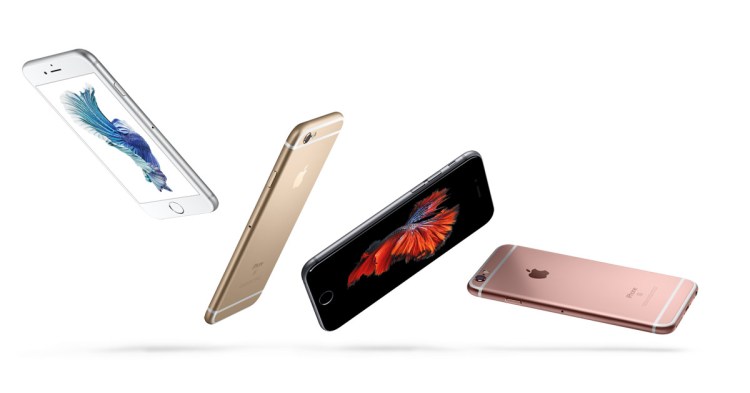Apple is nothing if not predictable. Every two years, in early September, it introduces a newly designed iPhone at a meticulously staged event in and around San Francisco. In the in-between years, it also introduces new iPhones, but they are visually indistinct from the previous year’s model, featuring upgrades to the software and internal components instead.
Tick, Tock, …Tock?
After eight years of this “new-every-two” dynamic, the strategy has even been given a nickname in the media: Tick-Tock. But for the first time since Tick-Tock became the status quo, Apple is poised to upend conventional wisdom by stringing together two Tock years in a row, when it unveils the 2016 iPhones on Wednesday.
As with anything that Apple does, this break in form has received no small amount of attention. The reason we can be so sure about the company’s plans is that new hardware from the Cupertino giant has long ago ceased to be kept under wraps until unveiled on stage. From reports in the Wall Street Journal and Bloomberg to dozens of leaks originating in the Chinese factories where the new phones are being manufactured, it is abundantly clear what they’ll look like.
And, except for some aesthetic tweaks to the antenna cut outs, new back camera layouts (especially on the dual-camera iPhone 7 plus), and the excision of the 3.5mm headphone jack, they will look very much like the iPhone 6 and 6 Plus introduced in 2014. This will set up an unusual shopping experience for consumers at retail: The brand new iPhones will end up looking very much like the two-year-old, heavily discounted models that they are often sold right next to.
In fact, the biggest mystery of Wednesday’s launch event seems to have nothing to do with the handsets’ specifications or appearances, and instead centers around the branding they’ll receive: iPhone 7? iPhone 6SE? Something else entirely?
Possible implications
Beyond this and a few other uncertainties (such as the retail release date), the really interesting component to this story has to do with the implications of such an unprecedented occurrence.
Apple is said to be saving the next major hardware redesign for 2017, which happens to be the 10th anniversary of a product which first debuted in 2007 as a headline-stealing phenomenon during that year’s Consumer Electronics Show. With that in mind, will consumers forgo this year’s model and save their cash for what’s shaping up to be a significant, perhaps iconic, release? Will critics look unfavorably upon what is essentially a third generation of the iPhone 6 models for failing to innovate rapidly enough?
Most importantly to many, how will investors react to such an iterative refresh for an unprecedented second year in a row? Wall Street hates uncertainty, and it’s been known to punish companies for uncompelling product launches, so how will AAPL fare once the dust settles and consumer preferences start to become clear?
I have a feeling that the company’s share price will take a hit post event, as it usually does when there’s a lack of real excitement or promise around the products being introduced. Tock years tend to feel particularly low-key, especially if they don’t include other launches that seem to have extraordinary potential.
I also think that sales will be somewhat soft, as has been the trend lately; consumers don’t seem to be as hungry for new models as they were in 2014, when Apple finally began offering screen sizes more in line with popular Android handsets. Or rather, they are hungry for fresh-looking iPhones, but they will have to wait another year to get them. And if they wait in large enough numbers, postponing purchases that would normally be made this year until next year, Apple may be poised for a tough year — iPhones are by far its largest revenue generator.
Potential counterbalances
Apple received one unexpected gift from rival Samsung last week, in the form of a nearly unprecedented recall of millions of Galaxy Note7 phones over battery defects — the entire first production run of those handsets. While Samsung should have replacements back on the market by the time the 2016 iPhones are released, it negates much of the head start that the Korean manufacturer was banking on. It may also sour Samsung in the minds of some consumers, which could prove advantageous to Apple.
There’s another upside here worth noting, from a financial perspective. A second consecutive Tock year brings with it tremendous opportunity for Apple to leverage the economies of scale enjoyed by its supply chain, as it enters its third year utilizing many of the same components.
Apple has always designed towards tremendous profit margins on its products, making it very much the envy of its competitors in the consumer electronics space. If it can manage to eke out even better margins on the 2016 iPhones than it had on the 6s and 6s Plus, it’s entirely possible to make more money off of fewer units sold.
It’s a wild card that would keep Wall Street satisfied as the company gears up for 2017 models that may once again unleash the pent up demand seen in 2014. If Apple is predictable with respect to its product roadmap, it is just as predictable when it comes to generating profits, even after having been written off by critics and bearish investors.


